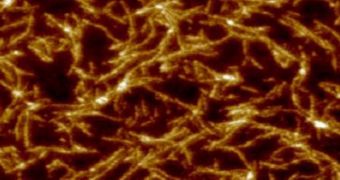Biologists agreed some time ago that ribonucleic acid, more commonly known as RNA, probably appeared on Earth before deoxyribonucleic acid (DNA) did. Now, researchers at the Georgia Institute of Technology propose an explanation of how that process or chain of events may have started.
The widely accepted theory on the origin of life on Earth holds that the earliest organic molecules and structures developed from a chemical soup that existed on our planet when the latter was very young. Out of this primordial soup, the earliest amino-acids and proteins emerged over millions of years.
Scientists widely believe that RNA is the first such organic molecule to develop, somewhere around 4 billion years ago. The new study by Georgia Tech investigators provide a new explanation for how this primitive form of the molecule developed into modern-day RNA and DNA.
Details of the new research, which was sponsored by the US National Science Foundation's (NSF) Center for Chemical Evolution and the NASA Exobiology Program, appear in a paper published in the December 14 online issue of the Journal of the American Chemical Society (JACS).
“In our study, we demonstrate a reaction that we see as important for the formation of the earliest RNA-like molecules,” explains Georgia Tech chemistry and biochemistry professor Nicholas Hud, who also holds an appointment as the director of the Center for Chemical Evolution at the university.
The new study, he adds, shows how molecules present on early Earth may have self-assembled into primitive, RNA-like structures under the right conditions. This may have been one of the most important leaps to occur in history, which favored the development of life on our planet.
Hud says that RNA most likely did not appear in its current form, due to its complex nature. It probably developed from much simpler chemical couplings, and became more complex as evolutionary pressure drove its structure and functions ever forward.
“This study is important in showing a feasible step for how we get the start of an RNA-like molecule, but also how the building blocks of the first RNA-like polymers could have found each other and self-assembled in what would have been a very complex mixture of chemicals,” the expert says.
“We’re looking for a simple, robust chemistry that can explain the earliest origin of RNA or its ancestor,” adds Hud. He conducted the new study with Georgia Tech graduate student Brian Cafferty, who was a coauthor of the JACS study.

 14 DAY TRIAL //
14 DAY TRIAL //